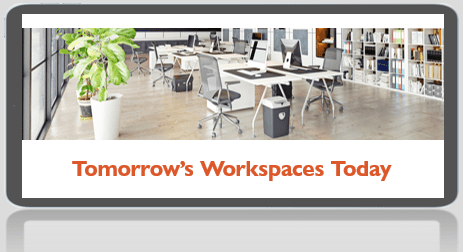Four key components to a successful specialist move
For any organization, changing location needs careful planning and execution. But for some companies the nature of their business means they need something more tailored than the average office move.
For example, hospitals, galleries, laboratories, and factories will require specialists to ensure business continuity and the safe transfer of highly sensitive and valuable equipment.
Specialised moving is a complex procedure, but it doesn’t have to be a problematic one – with the right equipment and expertise, the process can be smooth.
Specialist moving – how equipment relocation services work
A huge amount of planning goes into any company move, from how to relocate staff and furniture to when the move should happen, whether it will be phased, and how it will be announced to key stakeholders such as investors or customers. However, with a specialist move there is often an extra layer of complexity.
In this article, we spoke with Workspace specialists to explore the four components for a successful specialist move:
1. Planning
Planning a specialist move will begin with a series of meetings to discover the organization’s needs and establish exactly what is required. This process will occur many months, or even a year or more, before the move takes place. A reputable relocation firm will look at every aspect and work closely with each client to devise the most efficient way to relocate industrial equipment and people. The overriding factor that should be considered is: does this minimize downtime for the client?
2. Project management
A project manager will usually be appointed to oversee the move, liaising between the client and the relocation firm. Depending on the scale of the move, the project manager may even be embedded within the client’s organization for a period, getting to know its practices and establishing exactly what needs to be done.
Emphasis is placed on thoroughly understanding every department, what is being moved, the condition it needs to be relocated in and the environment in which they will be working.
3. Equipment relocation
Industrial equipment may need to be decommissioned and dismantled before it is moved and recommissioned in its new spot. Different from office relocation, laboratory equipment can be particularly sensitive, or there may be refrigeration units housing biohazardous material that must be maintained at a certain temperature.
Such materials cannot be easily replaced and therefore moving them must be planned to the minute to ensure the temperature remains constant. Sometimes, an organization will require the materials to be moved but not the refrigeration units housing them so any firm facilitating this will have to consider how to best move potentially dangerous materials and avoid any contamination.
Similarly, stable temperature and humidity is vital when historical artefacts or paintings are moved in which case temperature-controlled vehicles are a must.
4. Risk management
Risk factors are considered throughout the entire process and as far as possible, every eventuality is accounted for. For example, how to keep refrigerated vehicles working if they break down, what happens during adverse weather such as high winds when a crane is required, alternative routes in case of road closure, equipment failure and so on. This may require even greater consideration during industrial moving – particularly in the case of older buildings with access constraints and walls which might need to be dismantled before equipment can be transported.
Sometimes equipment may be so large that the only way to transport it is to break it down into its constituent parts and rebuild it onsite.
Case study – Moving the Francis Crick Institute across London

Crown was responsible for moving the Francis Crick Institute across London, a move which required more than 12 months of planning. The company also relocated the entire life sciences department at the University of Warwick – this took three months to plan but occurred over 15 days. With the Warwick move, certain large-scale equipment was moved into position and then walls were built around it once in situ on the new campus. Click here for the full story
Sustainability
Sustainability is an integral part, from route optimization to the use of recyclable and sustainable materials for packing. This can be challenging in a laboratory environment where cross contamination is a very real risk and disposable materials are sometimes a necessity, but it is something which is considered throughout. Crown is also conscious of its own carbon footprint and undertakes steps to minimize it wherever possible.
In any specialist move, there is a need to act efficiently and quickly but with precision and extensive planning. Crown Workspace’s experienced team can do just that – provide simple and effective specialist relocation services which minimize stress for an organization’s leaders and workers, but which get the job done.
Specialist moving requires careful planning, but it doesn’t have to be problematic and Crown’s ethos places huge emphasis on achieving this with minimal disruption and in a sustainable way.
Related stories
Announcing that you’re going to move offices is a huge part of a smooth relocation process. Whether it’s a small to medium enterprise, or a larger multinational – getting it right is essential for both your staff and clients alike.
Hybrid working is now standard, making it imperative for companies to reconsider the spaces they are utilizing – as well as the ones they are not. Despite this, Resume Builder reports that 90% of businesses plan to have most of their staff back in the workplace by the end of 2024. Therefore it is crucial […]
With the average worker spending 90,000 hours at work in their lifetime, it is widely understood that creating an environment that fosters satisfaction and happiness pays dividends not just for staff, but for your organization’s productivity too.




















